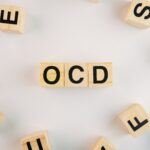Every October, the International OCD Foundation hosts OCD Awareness Week to shed light on a condition that is often misunderstood. Many of us have heard people casually say, “I’m so OCD” when describing their preference for neatness or organization. While usually said in jest, this misconception diminishes the very real challenges faced by individuals – children included – who live with Obsessive-Compulsive Disorder (OCD).
OCD is not a quirky personality trait; it’s a serious mental health condition that can interfere with daily life. At Westside Children’s Therapy, we know that children experience OCD too, and that it can deeply impact both the child and their family.
By combining Child Counseling and Occupational Therapy (OT), we provide an integrated approach to help kids build coping skills, regulate their nervous system, and regain confidence in their everyday lives.
What is OCD in Children?
There are two parts to OCD:
- Obsessions: intrusive and unwanted thoughts, images, or urges that cause distress.
- Compulsions: repetitive behaviors or mental acts performed to relieve that distress, even temporarily.
In OCD, the obsession comes first, and the compulsion follows as a way to cope. For example, a child might have constant fears about germs (obsession) and cope by washing their hands over and over (compulsion). The cycle provides short-term relief but reinforces anxiety over time.
Another example might be a child who repeatedly asks, “Are you mad at me?” or “Did I do something wrong?” even after being reassured that everything’s okay. These persistent worries (obsessions) and repeated questions (compulsions) are attempts to feel safe and in control.
OCD in children can look different than in adults. Kids may appear rigid with routines, excessively worry about making mistakes, or spend large amounts of time repeating tasks. Without support, these patterns can interfere with school, friendships, and family life.
How Common is OCD in Children?
OCD affects up to 3% of children worldwide, but many go undiagnosed or don’t receive the help they need until later in life. While the average age of diagnosis is around 19, symptoms often begin much earlier.
- Ages 3–6: OCD may show up as repetitive behaviors, frequent checking, or fears of germs and contamination.
- Ages 7–12 (Pre-Adolescence): This is the most common time for OCD to appear. Kids might experience intrusive thoughts about harm, order, or perfection, and try to ease their anxiety through counting, washing, or checking rituals.
- Teens and Young Adults: Symptoms can become more complex, sometimes involving moral or religious worries and longer rituals.
Research shows that many kids live with symptoms for years before getting help. The good news is that early intervention makes a big difference. The sooner OCD is identified and treated, the easier it is to break the cycle and help kids feel more in control.
Common Types of OCD in Children
Obsessions and compulsions can take many forms. Some of the most common include:
- Contamination fears – germs, dirt, or illness leading to excessive cleaning or handwashing
- Checking behaviors – making sure doors are locked, homework is “just right,” or appliances are off
- Perfectionism – extreme distress if something feels uneven, unfinished, or out of order
- Harm fears – worries about accidentally hurting themselves or others
- Repetitive rituals – needing to redo tasks until they feel “safe” or “right”
It’s important to note that OCD is not about being “too neat.” It’s about anxiety and the need for certainty. For kids, this can feel overwhelming and impossible to control without help.
How OCD is Diagnosed in Children
While many mental health professionals can recognize the signs of OCD, not all have the specialized training needed to treat it effectively – especially in children.
At Westside Children’s Therapy, our licensed counselors and clinical social workers have advanced training and hands-on experience in both diagnosing and treating OCD in kids and teens.
When evaluating for OCD, our therapists look for three key signs:
- Obsessions – recurring, unwanted thoughts, images, or fears that cause distress.
- Compulsions – repetitive actions or mental rituals meant to ease that distress.
- Impact on daily life – when these patterns take up a lot of time or interfere with school, home, or play.
The Role of Counseling in Treating OCD
Counseling, particularly Cognitive Behavioral Therapy (CBT) with a method called Exposure and Response Prevention (ERP), is considered the gold standard for OCD treatment. With proper treatment, OCD is treatable and manageable.
In ERP, a counselor helps the child gradually face their fears (the “exposure”) while practicing not performing their usual ritual or compulsion (the “response prevention”). Over time, kids learn that the feared outcome doesn’t happen and that they can tolerate the anxiety without relying on compulsions.
What Treatment Looks Like
At Westside, we begin treatment with helping kids and families understand OCD – what it is, how it works, and why certain behaviors happen. Once a child feels more comfortable and informed, the therapist will help identify the specific thoughts, fears, and routines (obsessions and compulsions) that are causing distress.
Together, the therapist and child map out a list of situations or thoughts that trigger anxiety, from least to most challenging. This becomes a roadmap for treatment, guiding which fears to face first and how to move forward step by step.
During exposure therapy, the therapist gently helps the child face their fears in a gradual, supportive way, without engaging in the rituals or behaviors that usually help them feel safe. This might include:
- Imaginal exposures: thinking about or imagining a feared situation
- Real-life exposures: facing fears in real situations
- Physical exposures: noticing and tolerating body sensations linked to anxiety
It’s important to know that a child is never forced to do anything they’re not ready for. Every step is planned and agreed on together, with plenty of support and encouragement.
Feeling anxious during these exercises is expected – and even helpful. Over time, kids learn that their anxious thoughts and feelings are temporary, that they can handle them, and that they don’t need to rely on compulsions to feel okay. This process helps them build confidence and regain control over their thoughts and actions.
The Role of Occupational Therapy in Treating OCD
Occupational Therapy focuses on treating symptoms and their impact on daily life. For children, their “occupation” is everything that makes up their daily world: playing, learning, socializing, and building independence in self-care. Pediatric OTs specialize in helping kids who experience functional impairments, sensory differences, or difficulties with everyday routines so they can participate more fully in the things that matter most to them.
OTs work with kids on self-care skills, fine motor skills, sensory processing challenges, emotional regulation, play and social skills, and cognitive/school skills.
Using a neurophysiological approach, OT helps children build regulation skills, strengthen awareness of their body’s signals, and manage the physical and emotional responses tied to OCD.
What is neurophysiological?
In simple terms, it means helping children understand how their brain and body are connected, and teaching them strategies to calm their nervous system when it feels overwhelmed.
Key parts of Westside’s OT approach include:
- Recognizing triggers and body signals: teaching kids to notice when they’re in a fight-or-flight state.
- Regulation strategies: breathwork, mindfulness, and sensory activities like heavy work (pushing, pulling, squeezing) that calm the nervous system.
- Adaptations and routines: using visuals, social stories, and structured steps to make tasks like showering, brushing teeth, or doing homework manageable.
- Just-right challenges: breaking tasks into smaller steps and supporting children as they practice independence without overwhelming them.
- Meaningful occupations: engaging kids in hobbies or activities they love to both motivate and distract from obsessive thoughts.
For example, if a child struggles with handwashing compulsions, OT helps assess the functional impact – are they missing class? Do they feel distressed if interrupted? The OT then collaborates with the child and family to create education, routines, and coping tools to reduce the behavior while supporting regulation.
How Counseling and OT Work Together
At Westside Children’s Therapy, we take a whole-child approach to treating OCD by combining counseling and occupational therapy (OT). Because OCD affects both how kids feel on the inside and how they function day to day, our integrated team works together to support your child emotionally, physically, and socially.
Our counselors and OTs stay closely connected through a shared system that keeps everyone aligned on goals and progress. This consistency helps kids feel safe, supported, and confident in their routines – key ingredients for lasting progress.
OCD is not something children simply “grow out of,” but with early and effective treatment, symptoms can become much more manageable. Through compassionate, collaborative care, our therapists help kids build the tools they need to take back control.
If you think your child may be struggling with OCD, or you’d like to schedule a free screening with a qualified child counselor, call us at (815) 469-1500 or click the link below.







